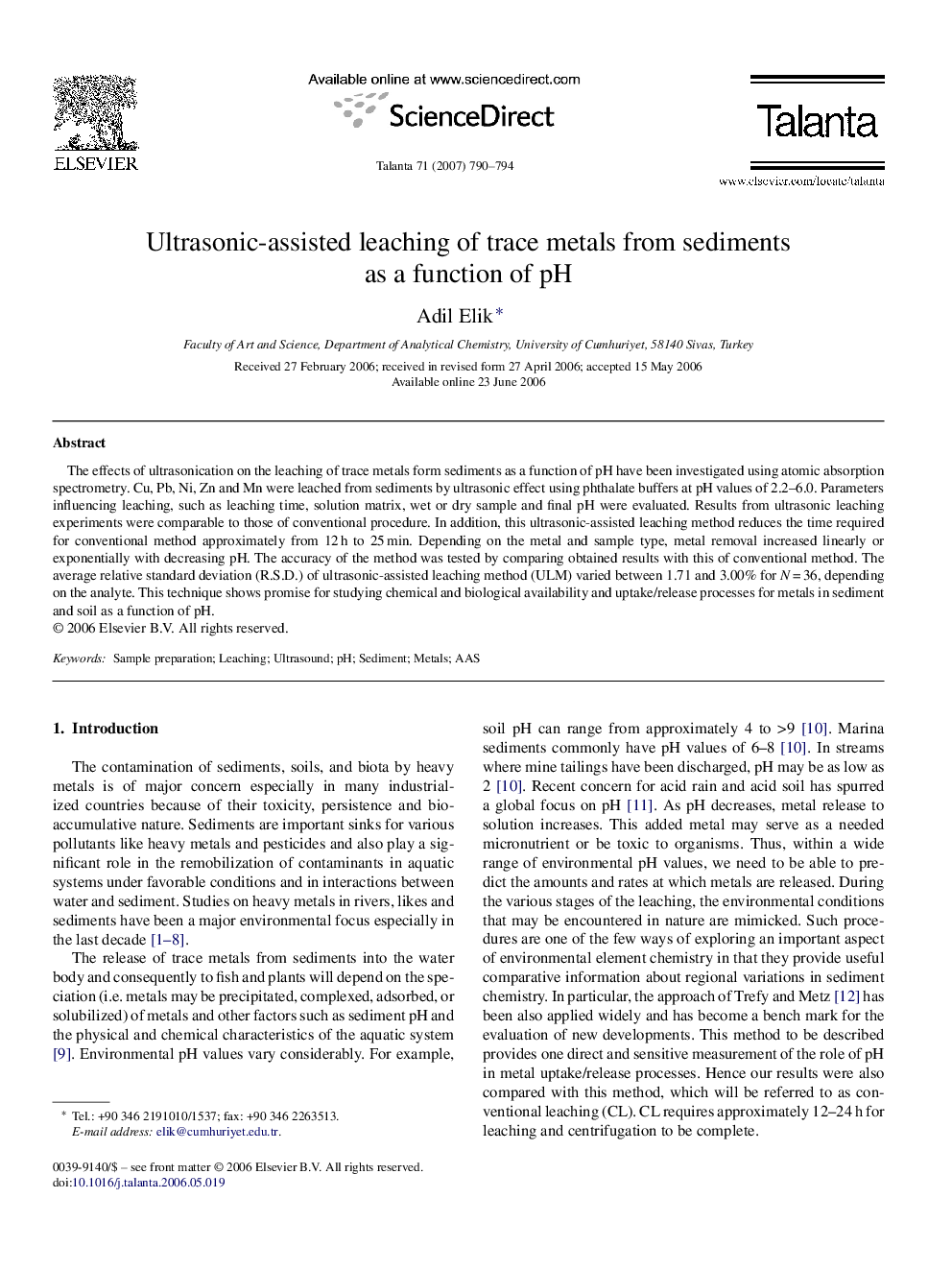| Article ID | Journal | Published Year | Pages | File Type |
|---|---|---|---|---|
| 1244254 | Talanta | 2007 | 5 Pages |
The effects of ultrasonication on the leaching of trace metals form sediments as a function of pH have been investigated using atomic absorption spectrometry. Cu, Pb, Ni, Zn and Mn were leached from sediments by ultrasonic effect using phthalate buffers at pH values of 2.2–6.0. Parameters influencing leaching, such as leaching time, solution matrix, wet or dry sample and final pH were evaluated. Results from ultrasonic leaching experiments were comparable to those of conventional procedure. In addition, this ultrasonic-assisted leaching method reduces the time required for conventional method approximately from 12 h to 25 min. Depending on the metal and sample type, metal removal increased linearly or exponentially with decreasing pH. The accuracy of the method was tested by comparing obtained results with this of conventional method. The average relative standard deviation (R.S.D.) of ultrasonic-assisted leaching method (ULM) varied between 1.71 and 3.00% for N = 36, depending on the analyte. This technique shows promise for studying chemical and biological availability and uptake/release processes for metals in sediment and soil as a function of pH.
